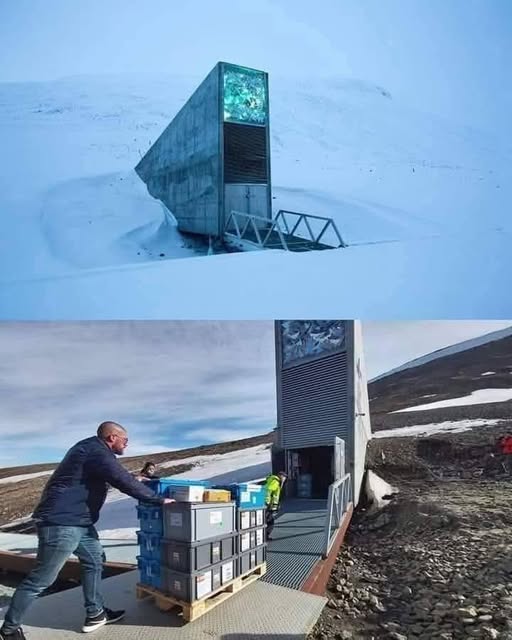
Deep in Norway’s remote Svalbard archipelago, over 1,000 kilometers from the North Pole, lies a remarkable underground fortress—the Svalbard Global Seed Vault. Often dubbed the “doomsday vault,” this Arctic stronghold, built in 2008, stores duplicate seeds from nearly every country, acting as a global backup for crop diversity.
Designed to withstand disasters, war, and climate change, the vault relies on Svalbard’s natural permafrost and stable geology. Even without power, the frozen surroundings ensure seeds remain preserved for decades or centuries. Inside, rows of shelves stretch into the cold darkness, with space for 4.5 million seed varieties—from essential crops like wheat and rice to rare, region-specific plants.
The vault was established by Norway, the Crop Trust, and NordGen with a clear mission: to protect the world’s agricultural heritage. Its importance was proven during Syria’s civil war when seeds from Svalbard helped rebuild damaged collections in Lebanon and Morocco.
Countries and institutions retain ownership of their seeds, shipping them in secure, climate-controlled packages. Today, over a million seed samples from more than 70 nations rest in the vault, symbolizing global cooperation and shared food security.
Unlike flashy projects, the seed vault operates quietly, its work unfolding over generations. It mirrors the patience of seeds—dormant yet full of potential—waiting for the day they’re needed.
This frozen ark carries a profound message: foresight and unity can prepare us for an uncertain future. In a world of growing instability, the vault stands as a silent guardian of hope.
As long as these seeds endure, so does humanity’s ability to rebuild and thrive. The Svalbard vault isn’t just a storage facility—it’s a promise to future generations.